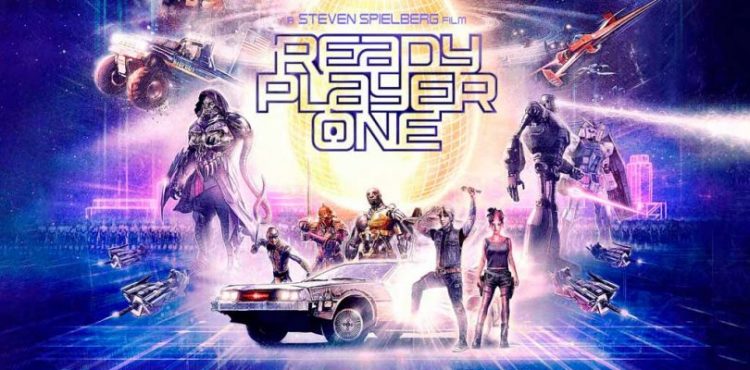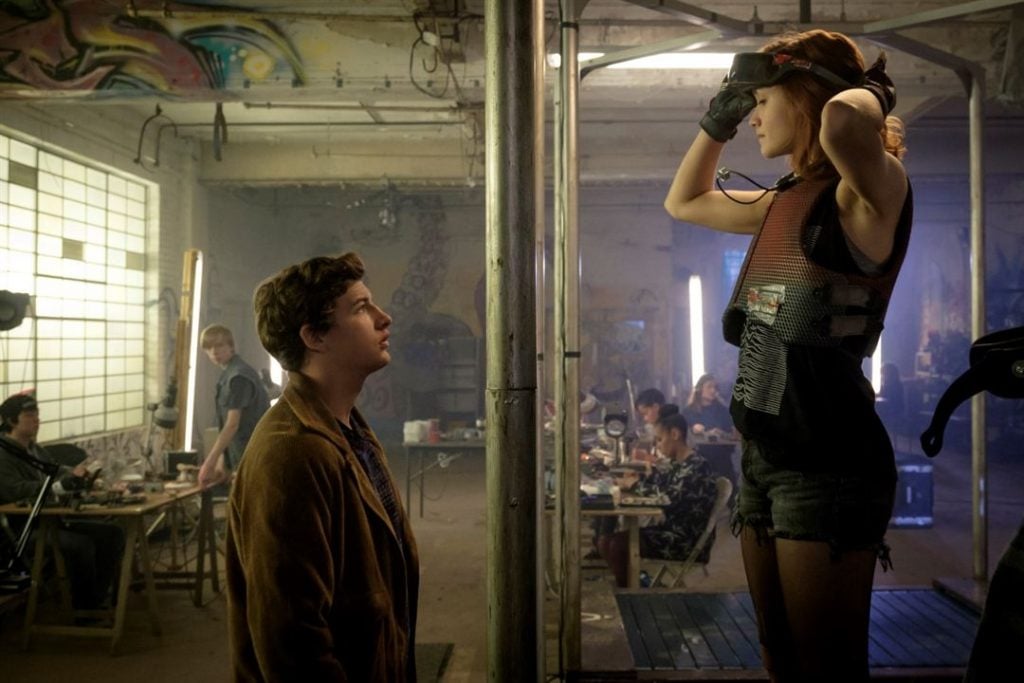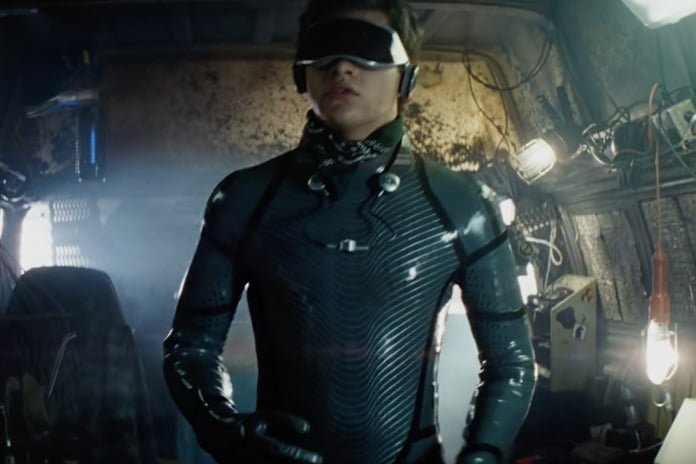
The future is a grim place in the world of ‘Ready Player One’ and the only escape for people is through virtual reality. The headsets that we can buy today at the local store have evolved into full body haptic suits, infinity treadmills, and completely immersive headsets that grant users a full sensory experience. It’s the OASIS where everyone spends their time and it’s become a massive, multi-trillion-dollar industry. Created by tech genius James Halliday (Mark Rylance), it’s the virtual reality universe where “a better reality awaits.”
When Halliday dies, however, his last challenge is posted: Three keys are hidden somewhere in the OASIS and the first person to solve the puzzles, obtain the keys, and unlock the third door will win ownership of the company. A huge prize and everyone tries to find clues and beat the puzzle. Including orphaned teen Wade Watts (Tye Sheridan), better known in the OASIS as Parzival. But five years have passed and no-one’s even found the first key; is it possible to solve the puzzles or is it a trick of 80s pop culture obsessed Halliday?
 Parzival and his eventual partner and occasional competitor Art3mis (played in the movie by Olivia Cooke) take a long, circuitous path to solve the riddles, find the keys, and proceed to the final challenge. Meanwhile, arch nemesis Sorrento (Ben Mendelsohn), head of the evil corporation IOI, is hell-bent on reaching and solving the final puzzle so that the company can gain ownership of the OASIS, an outcome that would turn it into a commercial wasteland.
Parzival and his eventual partner and occasional competitor Art3mis (played in the movie by Olivia Cooke) take a long, circuitous path to solve the riddles, find the keys, and proceed to the final challenge. Meanwhile, arch nemesis Sorrento (Ben Mendelsohn), head of the evil corporation IOI, is hell-bent on reaching and solving the final puzzle so that the company can gain ownership of the OASIS, an outcome that would turn it into a commercial wasteland.
The book ‘Ready Player One’ by Ernest Cline is rightfully one of the most successful publications of the last decade, a great read that immerses you in 80s culture, movies, music, comic books, and video games. For many, it’s a fun trip back to their own childhoods while for other readers it offered up a world where being smart was the sole criteria for ultimate success. I’ve read it twice, it’s that entertaining.
The book is also long and complicated, however, far more so than director Steven Spielberg and his production team could possibly bring to the big screen with just a single movie. Even a movie with an almost 2 1/2 hour running time. And so the film ‘Ready Player One’ ends up in that difficult space where it’s hard to understand what’s going on if you haven’t read the book, but frustrating to watch if you have read the book because of how much is left out and how much is changed.
 There are huge parts of the book that don’t even get a passing nod in the film, like the importance of the video games Joust and Zork. Other parts that are modified significantly: In the book, Parzival has to complete a “flicksync” of the 80s film Wargames, being able to stand-in for the protagonist and speak every line of the film exactly, even down to timing and intonation. In the movie, he has to find something within the fictional world of ‘The Shining.’
There are huge parts of the book that don’t even get a passing nod in the film, like the importance of the video games Joust and Zork. Other parts that are modified significantly: In the book, Parzival has to complete a “flicksync” of the 80s film Wargames, being able to stand-in for the protagonist and speak every line of the film exactly, even down to timing and intonation. In the movie, he has to find something within the fictional world of ‘The Shining.’
Which isn’t to say that the film isn’t quite enjoyable with its amazing visual design and inevitably immersive experience. There are lots of enjoyable scenes and the challenges to overcome for the three keys are all quite interesting, just more visual and less cerebral (as we should expect from a film). There’s a sense, however, that it’s almost two stories with a similar concept because of the many, many changes to the storyline. Big ideas in the book become passing references in the film, and completely new challenges show up to replace them.
The pacing of the film is a bit odd too; the opening car race perhaps offers some terrific excerpts for marketing but is too long when there are so many other, more interesting sequences later in the film that were shortchanged. I can’t help but wonder if there’s a lot of extra footage that will form the basis of an extended edition of ‘Ready Player One’ some day that adds more narrative and makes the film itself more coherent. The long, coy flirting between Parzival and Art3mis is completely missing, for example, and there’s a whole storyline about Parzival’s buddy Aech (Lena Waithe) that gets barely two minutes on screen but offers a smart angle on the positive and negative sides of virtual reality.
Still, the visual experience of seeing the OASIS and the fun of the challenges overcomes a lot of the narrative problems. Though some might cynically say that they’re just watching a video game since it’s almost all “in virtual reality.” It’s one heck of a game and definitely worth the quarter. Just don’t go in thinking that it’s a faithful adaptation of the book, because it’s surprisingly different, even if the underlying story remains the same.
![]()
